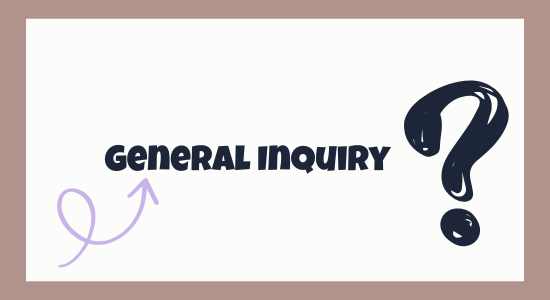
Covalent Bonding Made Easy – Visual Guide for Class 10 Students
What Even Is a Covalent Bond?
Have you ever stared at your textbook and thought, “Okay, atoms share electrons… but what does that actually look like?” You're not alone. Many students struggle to grasp covalent bonding because it's invisible. You can’t see electrons whizzing around, and unless you're an atomic microscope, you’re stuck with diagrams and abstract explanations. This often leads to confusion, poor test performance, and a dislike for chemistry.
Covalent bonding tends to feel like one of those topics that only makes sense after the exam. Why? Because students try to memorize it instead of visualizing and understanding it. If you’ve ever mixed up covalent and ionic bonds, got confused with shared pairs and lone pairs, or blanked out when drawing Lewis dot structures—this post is for you.
Why Misunderstanding Covalent Bonds Hurts More Than You Think
Let’s talk real-life and exams.
If you misunderstand covalent bonding:
- You’ll likely mess up chemical structure diagrams—costing you marks.
- You’ll struggle with related topics like molecular geometry, polarity, and organic chemistry.
- You won’t be able to connect chemistry with biology (like how oxygen and carbon dioxide interact in your body).
- You’ll find it hard to understand how compounds behave, like why water is liquid but oxygen is gas—even though both are covalently bonded!
In short: a weak foundation in covalent bonding leads to a chain reaction of confusion.
But what if there was a better way?
Fun, Visual, and Relatable Learning That Actually Sticks
Let’s break down covalent bonding in a way that’s simple, practical, and visual—with step-by-step examples, relatable analogies, and diagrams.
What Is Covalent Bonding, Really?
Covalent bonding is when two atoms share electrons to become more stable. It typically happens between non-metallic atoms (like hydrogen, oxygen, nitrogen, etc.).
Why do atoms share electrons?
Because they want a full outer shell—like a completed level in a video game.
Imagine two people each missing one puzzle piece. They decide to put their pieces together and share them. Now both feel complete. That’s what happens in covalent bonding.
Types of Covalent Bonds
1. Single Covalent Bond
→ One pair (2 electrons) is shared.
Example: H–H (Hydrogen molecule)
2. Double Covalent Bond
→ Two pairs (4 electrons) are shared.
Example: O=O (Oxygen molecule)
3. Triple Covalent Bond
→ Three pairs (6 electrons) are shared.
Example: N≡N (Nitrogen molecule)
Step-by-Step Guide with Diagrams
Let’s understand this with real examples and diagrams.
Example 1: Hydrogen Molecule (H₂)
Each hydrogen atom has 1 electron.
They each want 2 electrons in their outer shell.
So, they share one electron each.
Dot Diagram:
H • + • H → H : H
Shared pair = 1 → Single Bond
Example 2: Oxygen Molecule (O₂)
Each oxygen atom has 6 valence electrons.
They need 2 more to complete 8.
So they share 2 pairs → Double Bond
Dot Diagram:
O : •• + •• : O → O :: O
Shared pair = 2 → Double Bond
Example 3: Nitrogen Molecule (N₂)
Each nitrogen has 5 valence electrons.
Needs 3 more → Shares 3 pairs = Triple Bond
Dot Diagram:
N ••• + ••• N → N ≡ N
Shared pair = 3 → Triple Bond
Visualizing Covalent Bonds – Let's Make It Fun
1. Electron Dot Games
Draw the Lewis dot diagrams yourself using circles and dots for electrons.
Use two colors for electrons from different atoms—like red and blue—to make shared pairs clear.
Activity: Take any 5 diatomic molecules (H₂, O₂, Cl₂, N₂, F₂) and draw their dot diagrams using color pens.
2. Lego Analogy
Think of atoms as Lego pieces. Each connecting dot is an electron. When two Lego atoms share connectors, you form a bond.
- One peg = single bond
- Two pegs = double bond
- Three = triple bond
It’s a hands-on way to feel the bonding process!
3. Group Roleplay Activity
Assign each student the role of an atom. Give them stickers (representing electrons). Their task is to form stable molecules by pairing up and sharing stickers.
It brings bonding to life—and it’s a lot of fun.
Common Covalent Compounds and Their Uses
Let’s bring chemistry into daily life.

All of these are covalent compounds—made from shared electrons!
How to Remember It All?
1. Use the Octet Rule
Always ask: “Does the atom have 8 electrons in the outer shell?” (Or 2 for hydrogen.)
2. Check the Number of Bonds
- H = 1 bond
- O = 2 bonds
- N = 3 bonds
- C = 4 bonds
These are your go-to patterns.
3. Practice with Lewis Dot Structures
Draw them again and again until they make sense visually.
Case Study: Why CO₂ Is Non-Polar but H₂O Is Polar
Though both are covalently bonded:
- CO₂ is linear → charges cancel out → non-polar
- H₂O is bent → charges don’t cancel → polar
This affects how they dissolve in water, how they interact in nature, and even how greenhouse gases trap heat!
Covalent Bonds Are Everywhere—Understand Them, Don’t Just Memorize
From the air you breathe to the water you drink—covalent bonds shape your world. If you approach them with the right mindset, diagrams, and real-life connections, they’re not confusing—they’re fascinating.
So next time you see a dot diagram, don’t panic. Visualize it. Color it. Build it. Make it yours.
0 Comments
-
Comments will be injected here via JS












Post a Comment